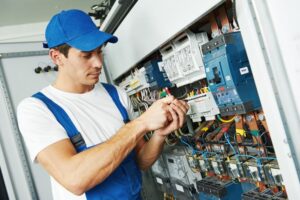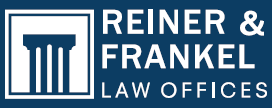Ensuring the safety of your home in a Redding wildfire or any liability issue protects your loved ones and property and shields you from potential liability issues.
While accidents can happen, taking proactive steps can significantly reduce the chances of injuries on your property and the subsequent legal complications.
Here’s a guide with 10 tips for keeping your Redding home safe from wildfires and other liability issues.
If you suffer injuries on someone else’s property, consult a California property accident attorney immediately.
Table Of Content
Let’s talk wildfire tips. Living in Redding, California, wildfires are a significant threat to your home and family. With the right precautions, you can minimize the risk and protect your property. Here are the top tips for keeping your Redding home safe from wildfires.
1. Maintain Defensible Space
Creating and maintaining a defensible space zone around your home is crucial for wildfire prevention. Ensure you have at least 100 feet of clear space around your property line. Remove dead plants, dry leaves, pine needles, and other combustible fuels to reduce the risk of a house fire.
2. Trim Tree Branches
Keep tree branches trimmed at least 10 feet away from your roof and other trees. This prevents the spread of flames and reduces the risk of your house catching fire.
3. Remove Debris
Regularly clear your roof, gutters, and around your home of debris such as leaves, twigs, and other flammable materials. This helps prevent flying embers from igniting your property.
4. Use Fire-Resistant Materials
When building or renovating your home, use fire-resistant materials for roofing, siding, and decks. This adds an extra layer of protection against flames and heat.
5. Install a Fire Extinguisher
Keep a fire extinguisher in key areas of your home, especially in the kitchen and garage. Make sure all family members know how to use it effectively in case of an emergency.
6. Plan for Emergency Preparedness
Develop an emergency preparedness plan with your family. This includes knowing the evacuation routes, having an emergency kit ready, and staying informed about local wildfire threats through Cal Fire and your local fire department.
7. Clear Around Your Home
Keep the ground around your home clear of grass, leaves, and other vegetation. This reduces the fuel available for a wildfire to spread to your home.
8. Create Barriers
Install firebreaks or barriers such as gravel or stone paths around your property to slow the spread of wildfires. These open spaces can act as a buffer between your home and the fire.
9. Secure Vents and Openings
Cover vents and other openings with metal mesh to prevent embers from entering your home. This helps keep flying embers out and reduces the risk of your house catching fire.
10. Stay Informed
Stay updated on wildfire conditions in your area. Regularly check alerts from Cal Fire, the fire department, and other local agencies. Being informed allows you to take timely action to protect your home and family.
Regular Maintenance Checks
Ensure the safety and integrity of your home through regular maintenance checks. These inspections can identify potential hazards that can lead to accidents or injuries, thus protecting you from liability issues.
Conduct thorough and systematic maintenance checks.
Start with a visual inspection of your home’s exterior. Look for signs of wear and tear or damage to the roof, such as missing shingles or tiles, which can indicate leaks or structural weakness. Inspect the siding for any damages or areas where water might infiltrate, leading to mold or structural damage.
The foundation of your home is equally important. Check for cracks or signs of movement, which can affect the stability of your house. Even small cracks can widen over time and lead to significant problems if not addressed promptly.
Pay close attention to the floors, walls, and ceilings moving inside. Loose floorboards and broken tiles pose tripping hazards and can indicate underlying issues like water damage or pest infestations.
Similarly, shaky handrails and fences can be dangerous and should be secured immediately. Check walls and ceilings for cracks, water stains, or signs of mold, as they can indicate leaks or poor ventilation.
Do not overlook electrical systems. Flickering lights, frequent circuit breaker trips, and outlets that do not work can signal electrical problems that require professional attention. Such issues not only pose a risk of fire but can also affect the overall safety of your home.
Plumbing is another important area. Promptly address leaks, slow drains, and any signs of water damage under sinks or around appliances. Ignoring these signs can lead to more significant issues, such as mold growth or structural damage.
 Windows and doors should close and seal properly to ensure security and prevent water from entering. Damaged seals or rotting frames can compromise your home’s safety and energy efficiency.
Windows and doors should close and seal properly to ensure security and prevent water from entering. Damaged seals or rotting frames can compromise your home’s safety and energy efficiency.
Lastly, don’t forget to inspect your home’s heating, ventilation, and air conditioning (HVAC) system. Regularly replacing filters, checking for leaks in ductwork, and ensuring the system runs efficiently can prevent fires and improve the air quality in your home.
Regular home maintenance is a proactive approach to ensuring the safety and longevity of your property. It allows you to identify and address potential issues before they become major problems, ultimately saving time and money.
Also, maintaining a safe and well-kept home can prevent accidents and injuries, minimize your liability, and give you peace of mind.
Remember, consistent and thorough maintenance checks are the key to avoiding unexpected hazards and ensuring the safety of your property and those who visit.
Secure Slippery Surfaces
Securing slippery surfaces in and around your home is a key step in preventing falls and injuries, thereby protecting yourself from liability issues. Slippery surfaces can be found anywhere but are most common in areas prone to moisture, such as bathrooms, kitchens, and outdoor walkways. Ensuring these areas are safe can significantly reduce the risk of accidents.
The risk of slipping is considerably higher in the bathroom, where water and dampness occur regularly. Using non-slip mats inside the shower or bathtub and on the floor outside can provide the necessary grip to prevent falls. These mats firmly adhere to the surface, ensuring stable and safe footing even when wet.
Apply non-slip strips or decals to the bottom of the bathtub or shower floor, which can further enhance safety without compromising the aesthetic of your bathroom.
The kitchen, another area frequently exposed to spills and moisture, requires similar attention. Placing non-slip rugs or mats in front of the sink, stove, and other areas where water or grease might accumulate can help prevent slips. Cleaning up spills immediately is essential to maintain a safe environment.
Outdoor areas, such as driveways, walkways, and steps, can become extremely slippery due to rain, snow, or ice. Regular inspections of these areas can help identify potential hazards.
Apply a non-slip coating to these surfaces, especially sloped or frequently used ones. These coatings are designed to provide traction, reducing the likelihood of slips and falls. During winter, keeping walkways and driveways clear of snow and ice is vital. Using salt or sand can help melt ice quickly and provide additional grip.
Lighting also plays a significant role in preventing falls on slippery surfaces. Illuminate pathways and entrances well to identify potential hazards, especially during the evening or on cloudy days when visibility is lower. Adequately illuminate all outdoor areas and promptly replace any burnt-out bulbs.
Finally, educating everyone in your home about the risks associated with slippery surfaces is important. Encourage non-slip footwear, especially in areas like the bathroom and kitchen, and remind family members to be cautious during wet weather conditions.
By securing slippery surfaces in and around your home, you can create a safer environment for your family and visitors. Not only does this help prevent accidents and injuries, but it also protects you from the legal and financial repercussions of such incidents.
Regular vigilance and maintenance in addressing these hazards underscore your commitment to safety and can significantly contribute to a secure and welcoming home.
Install Adequate Lighting
 Installing adequate lighting throughout your home is fundamental to ensuring safety and preventing accidents. Proper illumination of pathways, entrances, stairways, and other areas is not just about convenience. It can significantly reduce the risk of falls and other mishaps, particularly at night or in naturally darker areas of your home.
Installing adequate lighting throughout your home is fundamental to ensuring safety and preventing accidents. Proper illumination of pathways, entrances, stairways, and other areas is not just about convenience. It can significantly reduce the risk of falls and other mishaps, particularly at night or in naturally darker areas of your home.
When considering lighting enhancements, assessing each part of your home is essential. Outdoor areas, for instance, require robust lighting solutions to navigate safely during the night.
Motion sensor lights are an excellent option for entrances and pathways. These lights offer the dual benefits of energy efficiency and security, as they only activate when movement is detected, ensuring that these areas are well-lit when needed.
For indoor and outdoor stairways, adequate lighting is crucial to highlight each step clearly. Installing lights at regular intervals along the side of the stairs can illuminate each step, reducing the risk of missteps that could lead to falls. For added safety, consider using LED strip lighting along the edges of steps, providing a continuous light source that clearly defines the stairs’ boundaries.
Inside your home, consider the layout and use of each room to determine the best lighting solutions. High foot traffic areas, such as hallways, kitchens, and living rooms, should have a consistent light source that eliminates shadows and dark corners. Recessed lighting, ceiling fixtures, and wall-mounted lights can distribute light evenly, making navigation through these spaces safer for everyone, especially children and the elderly, who are at a higher risk of falls.
Bathrooms also demand careful consideration. A combination of overhead and task lighting around mirrors can ensure the space is well-lit, reducing the risk of slips and falls on wet surfaces. Additionally, installing a nightlight in bathrooms can provide safe, low-level illumination during the night, helping to prevent accidents.
For bedrooms, bedside lamps or wall-mounted reading lights can offer sufficient lighting for moving around the room without having to navigate in the dark. Consider using nightlights or low-level wall lights in children’s rooms that can remain on throughout the night to provide comfort and safety for younger family members.
Regular maintenance of your home’s lighting system is also important. This includes checking that all bulbs are functioning correctly and promptly replacing any that have burned out.
Consider the color temperature of the bulbs you use. Warmer tones are often better for creating a cozy, inviting atmosphere. In comparison, cooler tones can mimic daylight, providing a clearer view, which is particularly beneficial in task-oriented or high-traffic areas.
Keep Your Property Free of Hazards
Maintaining a property that is free of hazards is a key component in ensuring the safety of your home and minimizing the risk of accidents. A clutter-free and well-maintained environment not only enhances the aesthetic appeal of your space but also significantly reduces the likelihood of injuries occurring on your premises.
This approach involves a commitment to regular cleaning, organizing, and vigilant inspection to identify and mitigate potential risks.
The process begins with thoroughly assessing your entire property, indoors and outdoors, to identify items that can pose a tripping hazard or obstruct pathways. Neatly store garden hoses, tools, and play equipment in outdoor areas when not in use to prevent them from becoming tripping hazards.
Similarly, ensuring that walkways, driveways, and patios are free of debris, such as leaves, branches, and loose stones, is key. These elements can cause someone to trip and become slippery when wet, further increasing the risk of falls.
Indoors, the principle of maintaining clear paths and spaces is equally important. Regularly decluttering living areas, hallways, and staircases ensure these spaces are navigable and safe. This includes securing cords and wires from electrical appliances out of walkways, storing toys and personal items after use, and keeping floors free of spillages that can lead to slips.
An often overlooked aspect of keeping your property hazard-free is the maintenance of furniture and fixtures. Prevent carpets and rugs from becoming tripping hazards by securely fixing them to the floor with non-slip pads.
Promptly repair loose railings, handrails, and floorboards to prevent accidents. Arrange furniture to avoid obstructing pathways and doorways, and store heavy items on lower shelves to prevent them from falling and causing injuries.
Another important consideration is the lighting of your property. Adequate lighting is key in preventing accidents, especially in areas with high foot traffic or uneven surfaces. Ensuring that all areas of your home are well-lit, particularly at night, can help identify potential hazards and navigate safely.
Seasonal maintenance is also key in keeping your property safe. During the fall and winter months, leaves, snow, and ice can accumulate, creating slippery conditions on walkways and driveways.
Regularly clear these areas to prevent falls and ensure safe passage. During the warmer months, pay attention to outdoor spaces where overgrown vegetation obstructs pathways or conceals potential hazards.
In addition to these preventive measures, conduct regular inspections of your property to identify and address any new hazards that may have arisen. This proactive approach allows you to maintain a safe and welcoming environment for your family and visitors.
Securing Pets
Pets are integral to many families, but they can pose risks to visitors if not properly managed. Ensure pets are secured and cannot pose a danger. This involves maintaining sturdy fences and gates to prevent pets from escaping and potentially causing harm to themselves or others.
Consider using pet gates or keeping indoor pets in designated areas when visitors are present, especially if the pet is uncomfortable around strangers or tends to be overly protective. Regular training and socialization can also help pets become more accustomed to visitors, reducing the risk of aggressive behavior.
Fire Safety Measures
Installing smoke detectors in key areas such as bedrooms, living areas, and near the kitchen can provide early warnings in the event of a fire. It’s wise to test these detectors monthly and replace batteries at least once yearly to ensure they are always in working order.
Equally important is having fire extinguishers accessible in key areas, including the kitchen and garage. Educating your family on using fire extinguishers and practicing fire escape plans can significantly improve your household’s readiness in an emergency.
Pool Safety
 For homes with pools, a fence with self-closing and self-latching gates can prevent unsupervised access to the pool area. Pool alarms and covers add an extra layer of safety by alerting you when someone enters the pool or providing a physical barrier to prevent accidental falls into the water. Regular checks to ensure these safety features function correctly can help prevent tragic accidents and provide peace of mind.
For homes with pools, a fence with self-closing and self-latching gates can prevent unsupervised access to the pool area. Pool alarms and covers add an extra layer of safety by alerting you when someone enters the pool or providing a physical barrier to prevent accidental falls into the water. Regular checks to ensure these safety features function correctly can help prevent tragic accidents and provide peace of mind.
Childproofing Your Home
If children live in or visit your home, childproofing is necessary to prevent accidents. Securing heavy furniture and appliances to walls can prevent tipping, particularly important in areas where children play or spend a lot of time.
Installing safety gates at the top and bottom of stairs and keeping hazardous materials, such as cleaning supplies and medications, out of reach are also key measures. Covering electrical outlets and securing cords are additional steps to protect curious children from potential harm.
Reviewing Your Homeowners Insurance
Regularly reviewing your homeowner’s insurance policy ensures that you have adequate coverage for potential liability issues.
Understand your policy coverage and actively consider obtaining additional coverage for specific areas of concern, such as floods or earthquakes, which standard policies may not include. Identifying any gaps in coverage can guide informed decisions about additional insurance needs to safeguard your home and financial well-being.
Posting Warning Signs
If hazards exist on your property that cannot be immediately addressed, such as ongoing construction or a deep hole, take proactive steps to address them.
Post warning signs to alert visitors to potential dangers, helping to prevent accidents. Place signs in visible areas and use clear, concise language that people can easily understand. Eliminate signs for temporary hazards once you have eliminated the danger.
Contact a Property Accident Lawyer

Russell Reiner, Property Accident Lawyer
Taking these steps can help minimize the risk of accidents on your property and protect you from potential liability issues. However, even with all precautions in place, accidents can still occur. If you are facing a situation where someone suffers an injury on your property, it’s wise to consult a legal professional.
A knowledgeable California personal injury lawyer can navigate the process, ensuring you comprehend your rights and responsibilities while offering the support you need. Remember, protecting your home extends beyond physical measures. It also involves preparing for any legal challenges that may arise.
